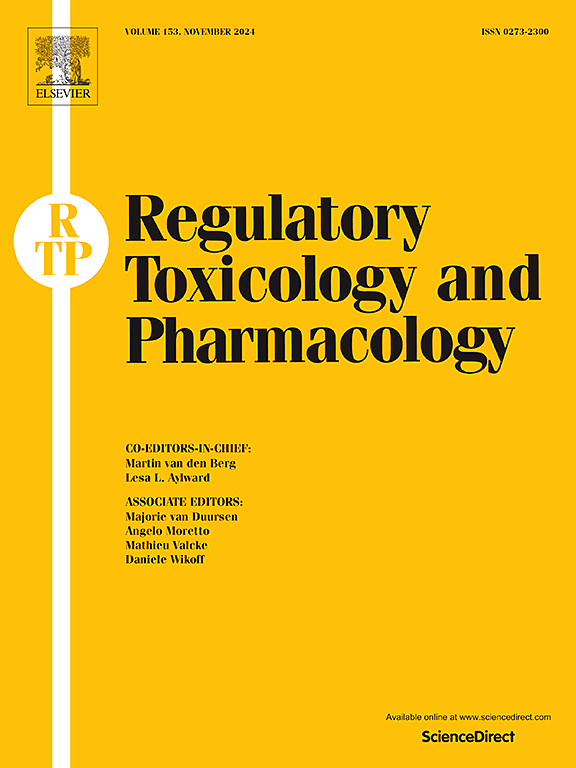钼酸钠大鼠体内微核试验及其对全面评估钼物质遗传毒性的影响。
IF 3
4区 医学
Q1 MEDICINE, LEGAL
引用次数: 0
摘要
本文介绍了一项符合《经合组织测试指南 474》和 GLP 标准的体内微核试验研究的方法和实验细节,以及在 Sprague Dawley 大鼠体内对钼酸钠二水合物进行的研究结果。在开展这项研究之前,关于钼物质的可靠体内遗传毒性数据还存在空白。在介绍这项新研究的同时,我们还回顾了有关钼物质遗传毒性的其他现有体外和体内数据,重点是那些含有或释放的钼酸根离子MoO42-被认为是造成任何毒理效应的主要分子的物质(分组/分类方法)。在考虑了所有可用数据的相关性和可靠性后,得出结论认为钼酸盐在体外和体内不存在遗传毒性问题。本文章由计算机程序翻译,如有差异,请以英文原文为准。
In vivo micronucleus assay on sodium molybdate in rats and its impact on the overall assessment of the genotoxicity of molybdenum substances
In this paper we present methodological and experimental details and results from an OECD Test Guideline 474 and GLP-compliant in vivo micronucleus study on sodium molybdate dihydrate in Sprague Dawley rats. Prior to the conduct of this study, there was a data-gap for reliable in vivo genotoxicity data for molybdenum substances. The presentation of the new study is complemented by a review of other available in vitro and in vivo data on the genotoxicity of molybdenum substances, focussing on substances where the contained or released molybdate ion, MoO42−, is considered the responsible moiety for any toxicological effect (grouping/category approach). After consideration of the relevance and reliability of all available data, the absence of a concern for genotoxicity of molybdate in vitro and in vivo is concluded.
求助全文
通过发布文献求助,成功后即可免费获取论文全文。
去求助
来源期刊
CiteScore
6.70
自引率
8.80%
发文量
147
审稿时长
58 days
期刊介绍:
Regulatory Toxicology and Pharmacology publishes peer reviewed articles that involve the generation, evaluation, and interpretation of experimental animal and human data that are of direct importance and relevance for regulatory authorities with respect to toxicological and pharmacological regulations in society. All peer-reviewed articles that are published should be devoted to improve the protection of human health and environment. Reviews and discussions are welcomed that address legal and/or regulatory decisions with respect to risk assessment and management of toxicological and pharmacological compounds on a scientific basis. It addresses an international readership of scientists, risk assessors and managers, and other professionals active in the field of human and environmental health.
Types of peer-reviewed articles published:
-Original research articles of relevance for regulatory aspects covering aspects including, but not limited to:
1.Factors influencing human sensitivity
2.Exposure science related to risk assessment
3.Alternative toxicological test methods
4.Frameworks for evaluation and integration of data in regulatory evaluations
5.Harmonization across regulatory agencies
6.Read-across methods and evaluations
-Contemporary Reviews on policy related Research issues
-Letters to the Editor
-Guest Editorials (by Invitation)

 求助内容:
求助内容: 应助结果提醒方式:
应助结果提醒方式:


